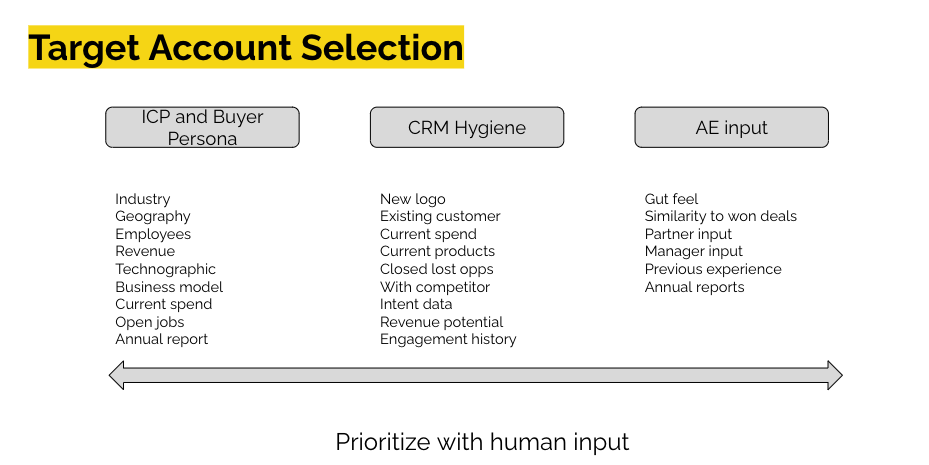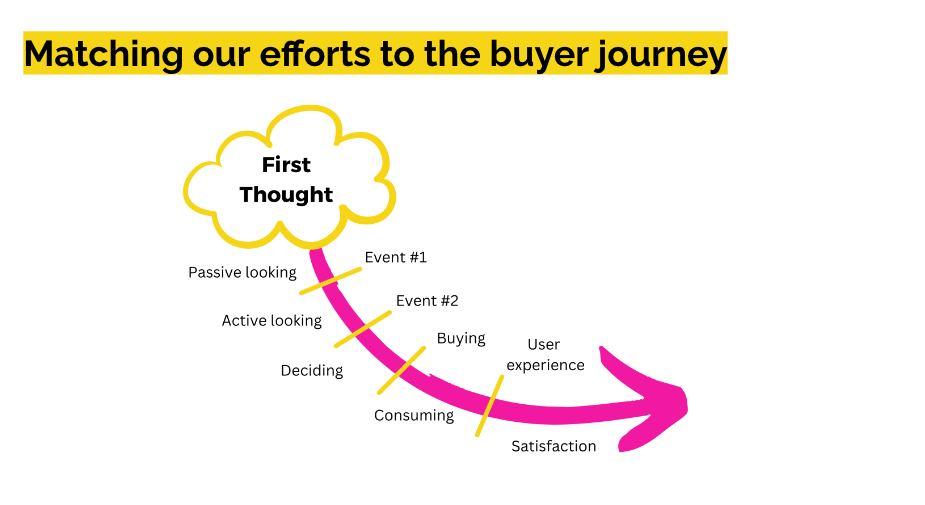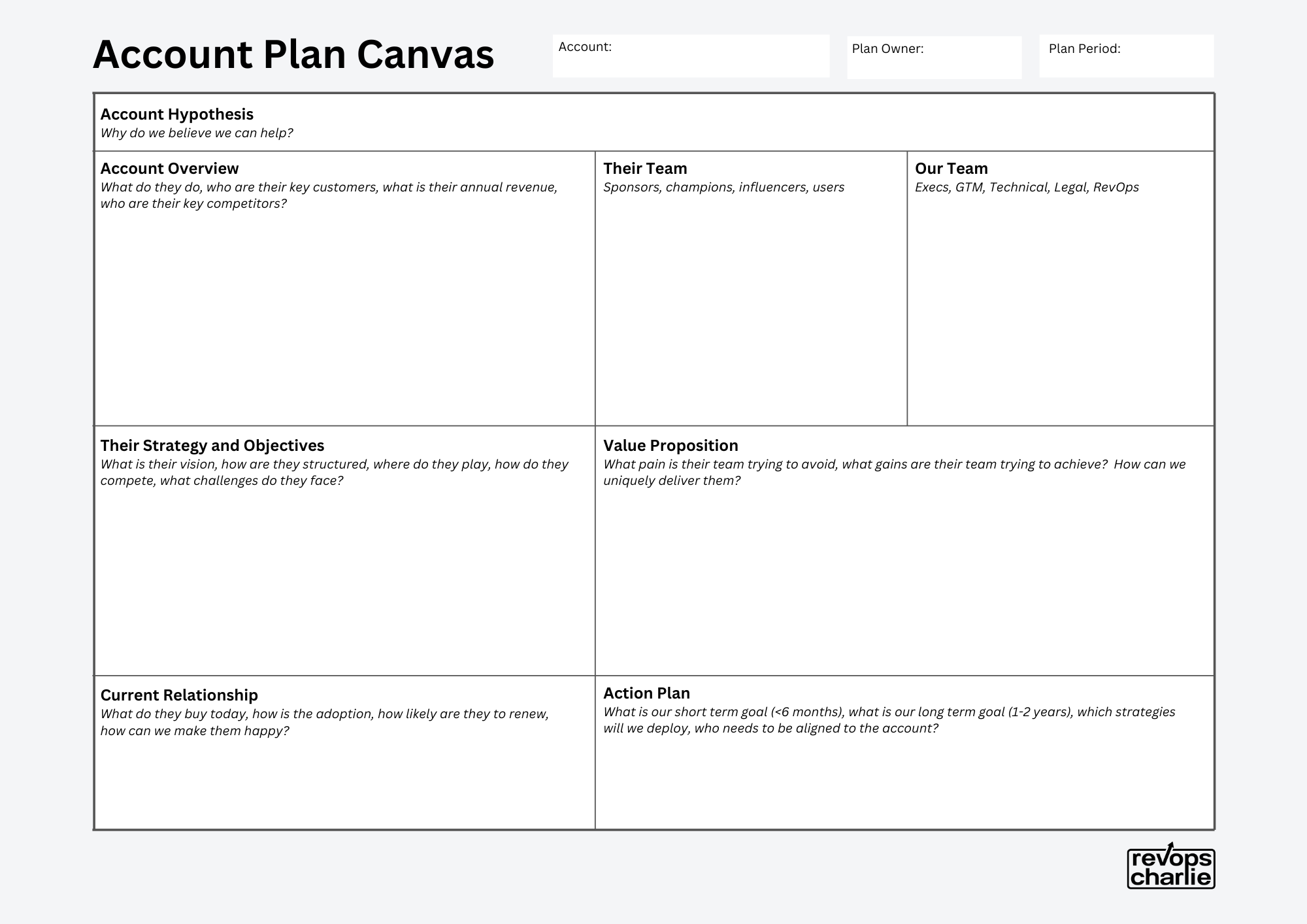7 questions to answer before you launch an Account Based Revenue program
As companies struggle to develop quality pipeline, many revenue leaders are investing in Account Based programs - Account Based Marketing, Account Based Selling, and Account Based Customer Success.
In this article I’ll walk you through an integrated Account Based Revenue model that removes siloes and builds a seamless buyer experience across your go-to-market teams.
I’ll pose seven questions that you should answer before you launch your program.
Will this program create or reinforce silos?
Account Based activity is a common source of go-to-market silos.
The marketing team deploy an ABM program to drive pipeline in the biggest accounts.
The sales leadership ask their AEs to develop Target Account Plans for their priority accounts.
The customer success team work with their top customers on dedicated success plans.
Three teams pulling in different directions, often for the same accounts.
Instead I call these programs Account Based Revenue (ABR) programs.
That always inspires someone to say “why not ABM, why not Target Account Selling?” giving me the opportunity to discuss an integrated plan that includes your full go-to-market team.
Double check you are aligned on the buyer stage definition
Account Based Revenue programs deploy different strategies depending on where the customer is in their journey with you.
Are they totally unaware of the problem you solve?
Are they an existing customer with opportunity for expansion?
Make sure your entire go-to-market team is aligned on the definitions across the buyer journey.
This map and definitions from ICONIQ is typical for a B2B SaaS company - how do you define your marketing stages?
What are we trying to achieve?
Don’t roll out an account based program just because you heard about it from a peer or read about it on a blog.
How will it support your strategic objectives for the coming year and beyond?
If you have a goal setting framework like OKRs, are there annual objectives that an ABR program would support?
Do these objectives have measurable key results with numbers attached that will let you know how you are progressing and when you have got there?
Are you focused on acquiring new customers or expanding the ones you have?
Are you focused on your domestic market or opening a new geo?
Are you focused on your core product or launching a new one?
How will we select target accounts?
Choosing the right accounts for your program is half the battle. You are about to invest a significant amount of time and money, so you want to make the right choices as they are not ones you should rollback on every month.
A typical approach is to look back at your best customers and consider what attributes they exhibit. Can you then use that to define what a good target account would look like?
A word of warning with this method.
Is where you came from where you want to go?
Many clients I work with are explicitly trying to go in a different direction.
“We always sell to IT and we need to be speaking to the business”
“We always sell in retail but our proposition is stronger in finance”
Remember we are looking for our “Ideal” customer profile, not our “Existing” customer profile.
With that in mind - start with looking at your existing customers, evaluate against your CRM data, and then input of your AEs (and CSMs if targeting existing accounts).
When considering the numbers of accounts to go into your program ABR programs are typically split into three tiers:
One to One - the highest support for up to 15 of your largest strategic accounts
One to Few - support across small groups of accounts with up to 50 in total
One to Many - more akin to normal marketing with up to 500 accounts
How will you structure yours?
You don’t need to pick every tier - focus will be the priority as you launch so pick one.
One to few can be a good balance of investment and outcome.
What resources do we need to allocate?
ABR programs are a big investment in an effort to see big returns.
You can categorise your investment across three areas:
People
Who will be assigned to this program to create content, manage ad spend, ensure systems are integrated, report and iterate?
Will you transfer existing roles? Hire in new team members? Use external consultants?
These are full time roles, so don’t just add it to your current Demand Gen team’s responsibilities
Money
Your biggest spend will be on media, to target advertising and content at specific contacts and accounts.
You will also invest heavily in new content creation for individual accounts or customer segments
Above the headcount you should expect a typical ABR program to cost $350k per annum according to Forrester.
Technology
ABR programs require automation and tech to scale. You may have many of these tools in place that can be configured for your new program.
Typical areas that are new investments are an ABM platform to automate advertising spend, and digital collaboration rooms to share your account-specific content.
An ABR portal built for a target account with Trumpet
What content do we need to create?
Content is at the heart of an ABR program. Instead of sharing ‘generic’ or ‘industry'-focused’ content, our target accounts receive messaging that is specific to their company - hence “Account-Based”.
We must ask ourselves, do we really understand the world of each buyer persona?
Do we really know what their job entails, their aspirations, and the blockers that are preventing them from achieving them.
Do we really understand how our product or service uniquely meets these gains and pains?
The content we want to create also needs to match the customer where they are in their buyer journey.
Companies that are totally unaware are looking for education about their business and the problems they face.
Companies that are existing customers are looking for advice on adoption and analytics.
We must align with our teams that are already engaged with these customers:
the Account Executives who have been researching and pitching into the customer
the Customer Success Manager who has been supporting the roll-out of an initial land deal
Together Marketing, Sales and Customer Success should combine into an integrated one page Account Plan that documents the strategic objectives for this account.
With an understanding of our buyer’s value proposition, of where our buyer is in their journey, of our go-to-market team’s aligned plan for the account, we can start to explore what content we need to create.
What existing content do we have?
Video
Written
Templates
Checklists
Which content can be repurposed?
Generic content becomes account-specific
Templates get pre-filled with account data
Video is re-recorded with account-specific talk tracks
What gaps do we have in our content for these target accounts?
Targeted at each buyer persona at their stage in the buying process
Buyer enablement tools to help them understand the cost of the status quo
What levels of support will our target accounts receive?
An ABR program is more than content. As your accounts move through their buying and expansion journey with you they will benefit from a wide range of additional support and activity:
Targeted ads by account and contact
Custom landing pages on your website
Bespoke events
Exec roundtables
Private communities
Customer Advisory Boards
Micro-portals
These and many more must be matched by the stage of the buying process that your customer is in, and the ABR tier that the account exists in.
Consider how these resources and events will be delivered, who will own them, and where budget will be assigned from.
How will we measure success?
Your final question to answer is how you will be able to report on the success of your program.
Let’s think back to our original strategic objectives for this ABR program.
They likely involved winning new deals, or expanding existing customers. These are hard numbers with $ attached to them.
In our reporting we want to ensure we have an integrated report across all aspects of our go-to-market function.
There is no point presenting a report on what percentage of accounts are ‘engaged’ with our program if those accounts didn’t meaningfully convert to revenue at a higher rate than accounts outside of the program.
Avoid building reports in a single system (ABM, CRM or CS platform). Instead, build your reports in your centralised reporting platform - your Revenue Operations Insights team can help you.
Consider these metrics:
Account Engagement Rate - % of accounts meaningfully engaged with our company
Accounts with meetings - % of accounts sales has completed a meeting with
Target account pipeline - $ pipeline created in target accounts
Opportunity rate - % of accounts with new opportunities created in a given time period
Pipeline velocity - duration from initial contact to closed opportunity
Account win rate - % of target accounts with a new win in a given time period
Existing Account NRR - this year’s revenue as % of last year’s revenue
Bookings - $ closed-won deals in target accounts in a given time period
Return on Investment - $ generated from ABM accounts divided by ABM program cost
Can you also compare the metrics by tier (1:1, 1:Few, 1:Many) and against non-ABR accounts?
Start building!
So there you have seven questions that will help you as you design your Account Based Revenue program.
Good luck, and if you need support, I advise founders and revenue leaders on designing and launching these programs.
Get started
Whenever you are ready, there are three ways that I can help you accelerate your revenue.
RevOps Maturity Assessment - Take my free 22 question assessment and receive specific suggestions on how to improve your revenue growth.
Business Model Design Workshops - I’ll work with you and your team to design or refine a business model and value propositions for a new or existing product.
Pipeline Emergency Rescue - I’ll fix your pipeline problem in 12 weeks, working across your revenue teams to create and launch refined value propositions, buyer enablement tools, and new campaigns.











